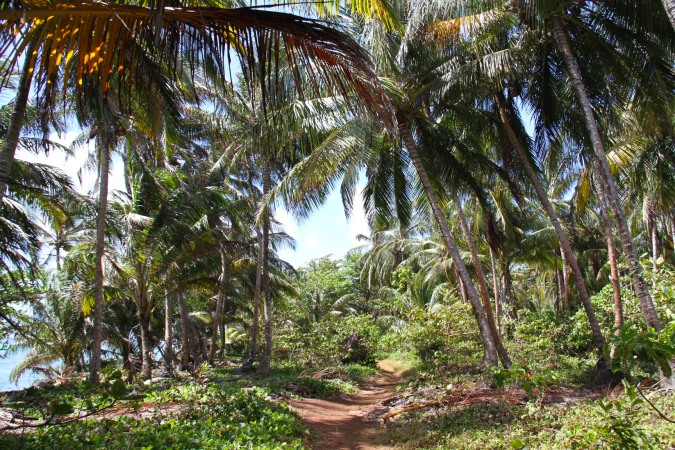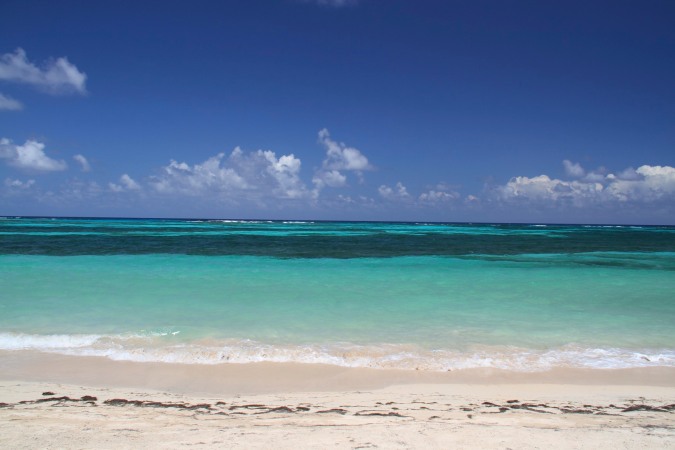After our time in Pearl Lagoon and on the Pearl Keys, its seemed unlikely that Nicaragua’s much-heralded Corn Islands would live up to their billing as some of the Caribbean’s finest islands only recently on the international travel map. We skipped the more developed Big Corn Island and headed straight to Little Corn Island, where I discovered just how wrong I was.
Little Corn Island demands superlatives. It’s beautiful, the ocean is all sparkling blues and turquoises, the seafood and rum are delicious and, perhaps best of all, there isn’t a single motor vehicle on the island. The only wheeled transport is by wheelbarrow or handcart.



You can walk all around Little Corn on dirt tracks that criss-cross the forested interior en route to the ocean and not hear a sound other than birds, the wind and the waves. Its a rare experience these days to be unable to hear the ‘world’, and it creates a seductive tranquility. We stayed in a wooden cabana with refreshing sea breezes, a few steps from the warm waters of the Caribbean – from the veranda we watched sunrises to end all sunrises.




The island fun starts with the transport options to get there. You can fly directly to Big Corn Island, but we decided that taking one of the slow boats that make the five or six hour trip from Bluefields a couple of times a week would be more interesting. Once you arrive on Big Corn a panga, a small motorboat, will speed and jolt you across the 30km that separates Big Corn from Little Corn.
The panga we took normally holds twenty six; our panga was crammed to sinking-point with forty one passengers, nine of whom were standing. Regardless, our boat went at top speed across the water, crashing into fairly sizeable waves. While I was concentrating on trying to keep my spine intact, I didn’t notice the back half of the boat getting soaking wet. When we finally reached Little Corn a dozen people looked half drowned.
Welcome to the Caribbean…luckily, we arrived on Little Corn just in time to watch the sun set over the Caribbean.


70km from the mainland, the Corn Islands’ history reflects the history of this whole coast. The population are predominately English-Creole speakers of Afro-Caribbean descent, originally brought as slaves to grow corn (in Spanish the islands are called the Islas del Maiz). Despite early Spanish interest (Christopher Columbus stopped by in 1502), British pirates frequented these waters and made the islands their base. They became a British protectorate until 1894.
The culture of the islands reflects this history but, thanks to the current boom in tourism, this unique culture has changed in recent years with an influx of Spanish speakers from the mainland.




Little Corn Island is a small piece of paradise. Fresh seafood abounds, coconuts and pineapples grow and there is a natural aquifer providing fresh water – something seafarers from 1502 onwards appreciated. Tourism is putting pressure on fresh water resources, and Little Corn’s future may depend upon the island’s population being able to balance the needs of the environment against the need to develop the economy.
Many of the inhabitants of Little Corn are poor and live in small wooden houses or tin shacks. Take a walk in the right direction, away from the beaches and restaurants, and you can see the challenges facing many people and how tourism could easily become a divisive business if people don’t see any benefit from the predicable flood of tourists to the island in the next few years.



For the time being though, and hopefully for a long time to come, Little Corn Island is a wonderful place to spend a few days living out the Caribbean fantasy.


such beauty…but alas always the need to balance having food on the table with starvation…I do hope they’re able to continue to maintain their fresh water supply
Very true, but the first step is recognising the problem which the islanders have done. Hopefully solutions follow.
Reblogged this on Oyia Brown.
Just to clarify… The ferry from Bluefields was a mistake. Alternatively scorched and soaked. Not to mention having to get off when we’d secured our seats… To show our tickets. Save up and fly is my advice; it was a long 5 hours.
However, it was all worth it in the end
Aaaaah noooo! Torture!
What can I say! The rest of this continent is filled with ocean and beaches, occasionally they come with rum. I’m thinking of opening a rum bar on the beach in Copacabana to make it feel like being at the ‘real’ beach. Hope you’re doing well?
Rum bar on the beach in Copacabana sounds good. I take it that you don’t mean the bolivian one… Doing well over here, thank you. Weather is fabulous, sunshine but cool air. Yey.
I do mean Copacabana, Bolivia. I thought a rum bar would add a touch of class alongside the plastic duck pedaloes. Glad to hear the weather is good, we’ll be back in a few weeks.